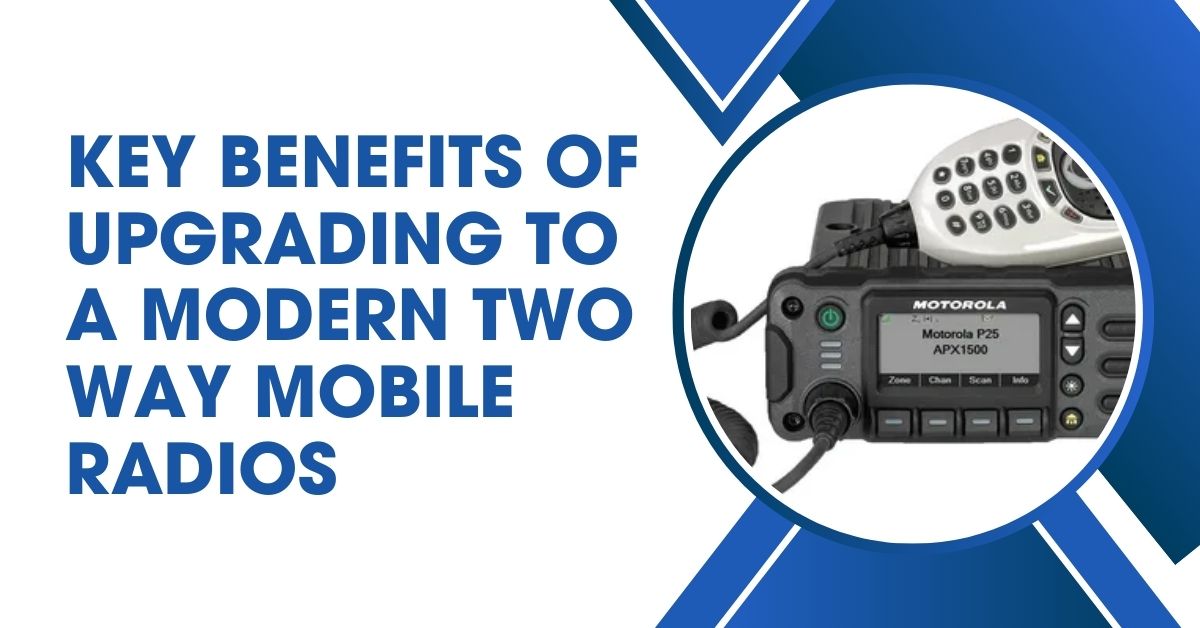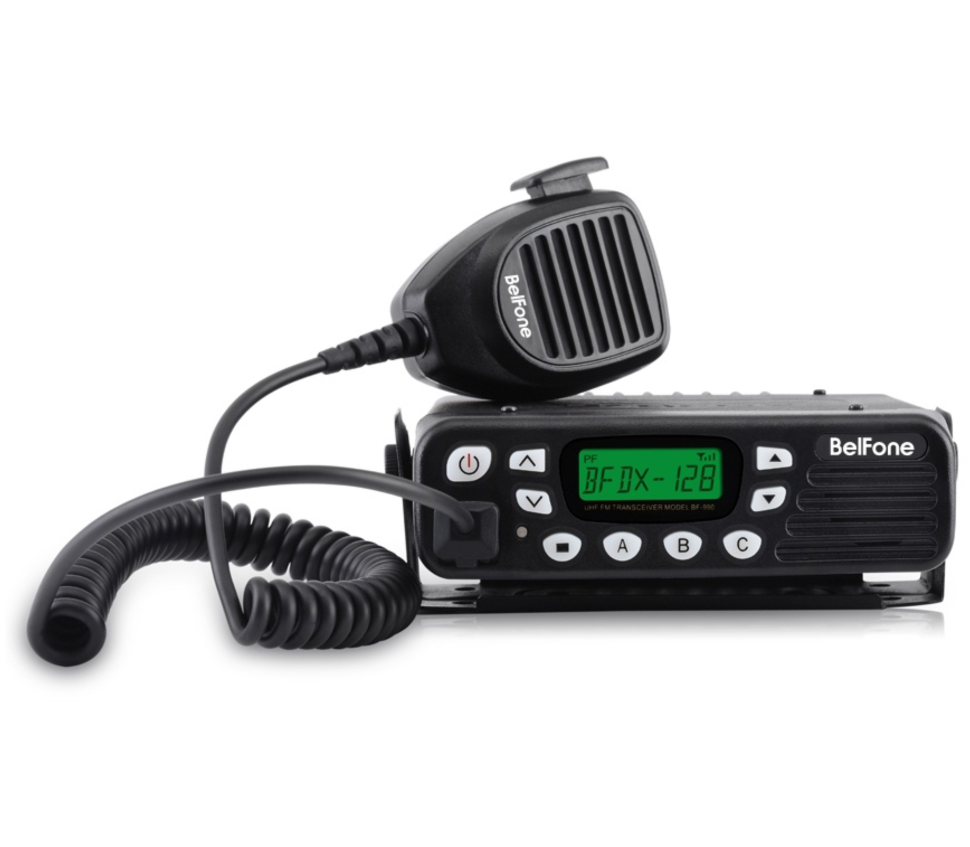
In any business or operation where communication is key, having a reliable communication system is essential. Two-way radios are often used for quick, efficient communication, especially in industries like construction, logistics, hospitality, and emergency services. However, as technology evolves, upgrading to a modern two-way mobile radios base station offers several advantages. Whether you’re looking for better coverage, increased reliability, or advanced features, modern systems can significantly improve the way your team communicates. In this blog, we’ll explore the key benefits of upgrading to a modern two-way mobile radios base station.
What is a Two-Way Mobile Radio Base Station?
Before we dive into the benefits, let’s briefly define what a two-way mobile radio base station is. A two-way radio system allows two-way communication between radios and a central base station. It acts as a hub, receiving and transmitting signals to keep everyone connected within a certain range. A modern base station is built with advanced technology to improve sound clarity, extend the range of communication, and provide a more reliable and secure connection.
Now, let’s take a closer look at the key benefits of upgrading to a modern two-way mobile radios base station.
Note – Looking to enhance your communication system? Upgrade to a modern Two Way Mobile Radios Base Station with Soyuz Tech Trading. Their reliable solutions ensure clearer communication, greater coverage, and advanced features to keep your team connected. Contact Soyuz Tech Trading today to learn more and find the right system for your business needs.
1. Enhanced Communication Range and Clarity
Wider Coverage for Better Communication

One of the primary reasons to upgrade your two-way mobile radios base station is the improvement in coverage. Older radio systems often have limited range, especially when you need communication over large distances or in areas with obstacles such as buildings, hills, or heavy machinery. Modern base stations use more advanced technology, which allows for a wider communication range. This is especially useful in large facilities, construction sites, or remote locations where clear communication is essential.
Clearer Audio and Less Interference
Old radio systems can suffer from poor sound quality, static, or interference, making it difficult to understand important messages. Modern systems provide clearer audio, with less static and better signal quality. This results in fewer misunderstandings and more effective communication between team members. Clear communication is especially critical in emergency situations or when giving instructions to large groups of people.
2. Improved Durability and Reliability
Built to Last in Tough Environments
Upgrading to a modern two-way mobile radio base station ensures that your equipment can withstand tough environments. Older radios may not perform well in extreme weather, dusty areas, or noisy environments. In contrast, modern base stations are often designed to be more rugged and durable. Whether your operation is in a factory, on a construction site, or in a warehouse, a modern system will continue to function under tough conditions.
Reduced Downtime and Fewer Repairs
Modern systems are generally more reliable than older ones. With fewer malfunctions and breakdowns, you can avoid the downtime that comes from constantly fixing or replacing parts. This can result in cost savings for your business, as you won’t need to spend as much on repairs or replacements. Investing in a newer, more reliable base station ensures that your communication system remains operational, reducing interruptions in your workday.
3. Advanced Features and Integration Capabilities
Access to New Technologies
Modern two-way mobile radios come with a range of advanced features that older models simply don’t offer. These include digital encryption for secure communication, GPS tracking, better battery management, and even text messaging capabilities. These advanced features can help increase the efficiency of your communication system and make it easier to track the location of team members.
- Digital Encryption: This feature ensures that your communication remains secure and private. This is particularly important in industries that deal with sensitive information.
- GPS Tracking: Many modern radios offer GPS integration, allowing you to track the location of employees in real-time. This can be helpful for managing field teams, especially when they are working in remote or large areas.
- Text Messaging: Some systems even allow users to send text messages, making it easier to share information that may be too long for a quick radio transmission.
Seamless Integration with Other Systems
Another benefit of upgrading is the ability to integrate your two-way radio base station with other communication tools, such as smartphones, email systems, or cloud-based applications. This allows your business to streamline communication and ensure that all systems are working together. For example, you could set up your radio system to alert team members of new emails or messages, keeping everyone in the loop.
4. Increased Safety Features
Emergency Alerts and Panic Buttons
In high-risk environments, safety is a top priority. Modern two-way mobile radio base stations come equipped with safety features such as emergency alerts, panic buttons, and man-down sensors. These features allow workers to quickly notify others in case of an emergency.
- Emergency Alerts: Employees can press a button on their radio to send an immediate alert to supervisors or team members, ensuring a quick response in case of an accident or urgent situation.
- Panic Buttons: In certain dangerous situations, workers can activate panic buttons, which automatically send out an emergency signal to the base station.
- Man-Down Sensors: Some modern radios include sensors that detect if a worker has fallen or is motionless for a certain period. If this happens, the radio automatically sends a distress signal to the base station.
These features help ensure that your team members are safe and that help is available when needed.
5. Cost-Effectiveness in the Long Run
Lower Maintenance and Repair Costs
While upgrading to a modern two-way mobile radio base station may require an initial investment, it can be more cost-effective in the long run. Older systems may require frequent maintenance, repairs, or replacement of outdated parts. These ongoing costs can add up over time. Modern systems, on the other hand, are built to last longer and require less maintenance.
- Reduced Repair Costs: New systems are generally more reliable, meaning fewer repairs will be needed.
- Energy Efficiency: Modern systems are often more energy-efficient, which can help reduce operational costs.
- Longer Lifespan: Upgrading to a modern system means that you won’t need to replace your equipment as often, saving you money in the long term.
Avoiding Costly Downtime
Modern radio systems are designed to minimize downtime. With fewer technical issues and better overall performance, your team will spend less time troubleshooting and more time focusing on their work. This can lead to increased productivity and less disruption to your business operations.
6. Scalability for Future Growth
Growing with Your Business
As your business grows, so do your communication needs. A modern two-way mobile radio base station can easily be scaled to meet the demands of a larger team or expanded operations. Whether you need to add more radios, extend coverage to a larger area, or integrate new features, modern systems are built with scalability in mind.
- Expandable Systems: Modern systems allow you to add more radios and base stations as your team grows, without requiring a complete system overhaul.
- Future-Proof Technology: As your communication needs change, modern systems can be updated with new features or technologies to keep up with the times.
By investing in a modern system, you’re ensuring that your communication infrastructure can grow alongside your business.
7. Better User Experience
Simplicity and Ease of Use
Modern two-way radio systems are designed with ease of use in mind. With intuitive controls, simple interfaces, and user-friendly features, even those who are not familiar with radio communication systems can quickly learn how to operate the equipment. This improves the overall user experience and makes it easier for new team members to get up to speed.
- Simplified Controls: Modern systems often have user-friendly controls, making it easier to adjust settings, make calls, or switch between channels.
- Better Battery Life: Many modern systems come with better battery management, allowing radios to last longer on a single charge and reducing the need for frequent charging.
The ease of use and longer-lasting power make modern systems more convenient for day-to-day operations.
Conclusion
Upgrading to a modern two-way mobile radios base station offers many benefits that can improve communication, increase safety, and save costs in the long term. With better coverage, advanced features, enhanced safety options, and a more reliable system, modern base stations ensure that your team stays connected and efficient, even in the toughest environments. Whether you’re looking to improve communication across a large site or ensure that your team is safe and productive, upgrading to a modern system is a smart investment for the future of your business.
If you’re ready to take your communication to the next level, consider upgrading your two-way mobile radio base station today and enjoy the benefits of improved performance, safety, and scalability.
For more insightful articles related to this topic, feel free to visit smallbizblog.net